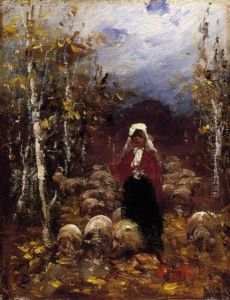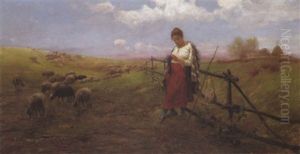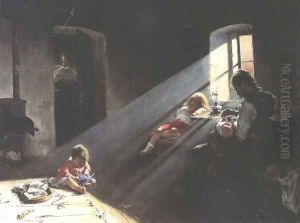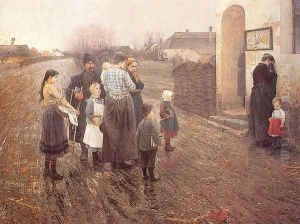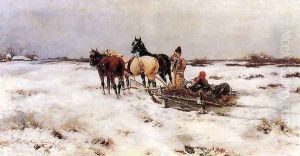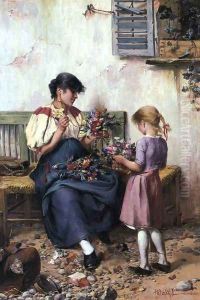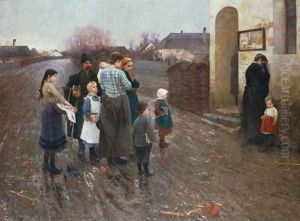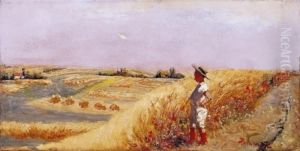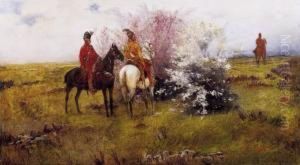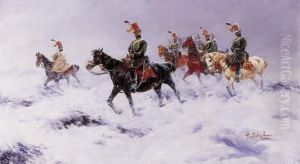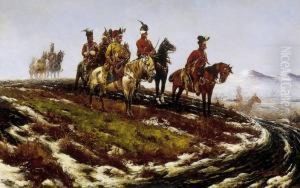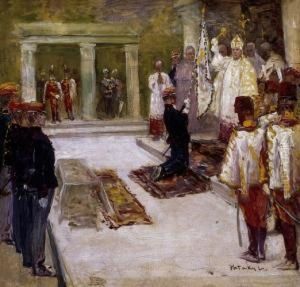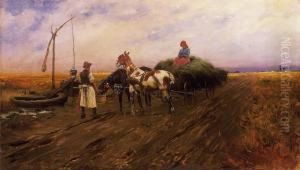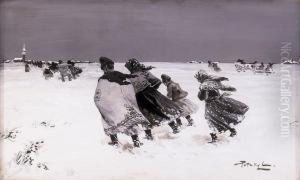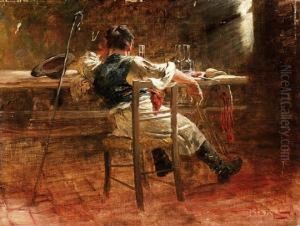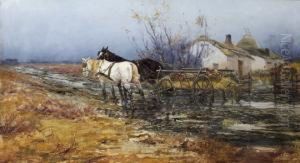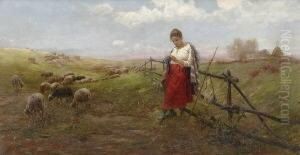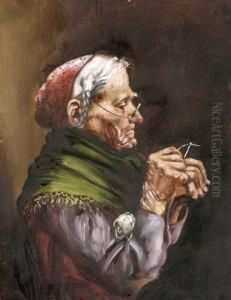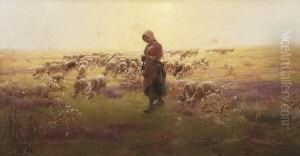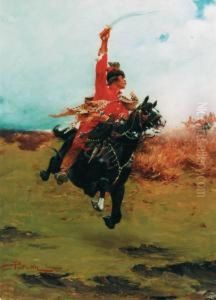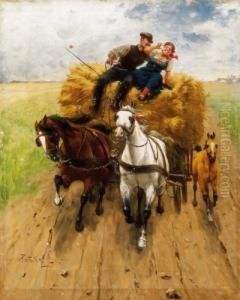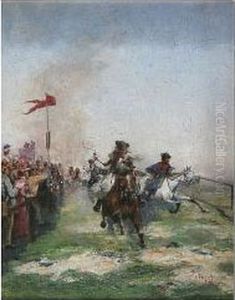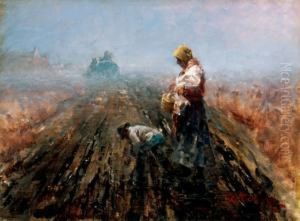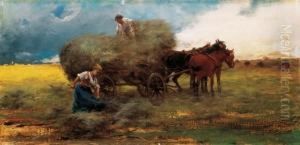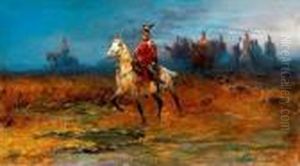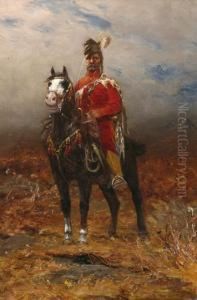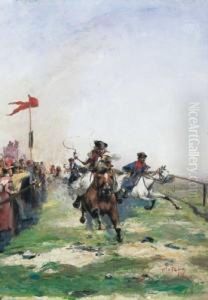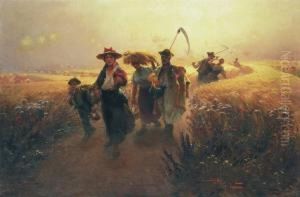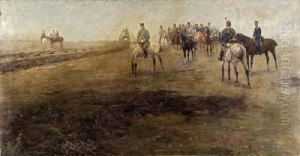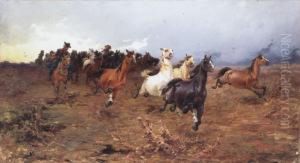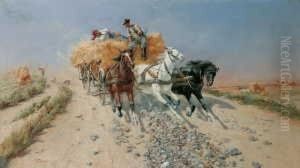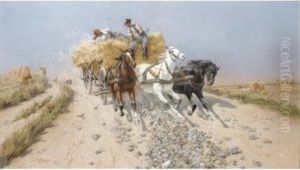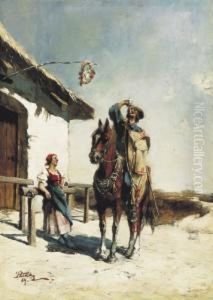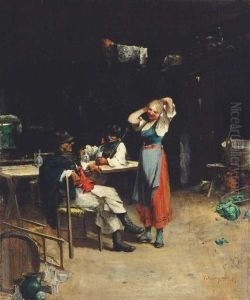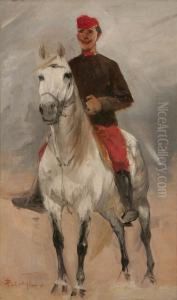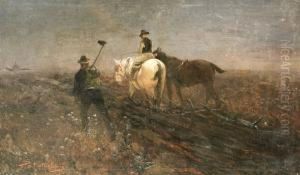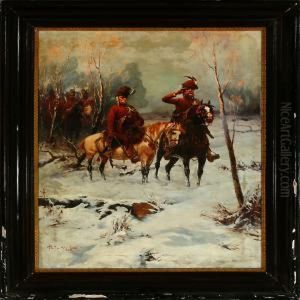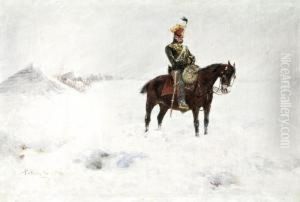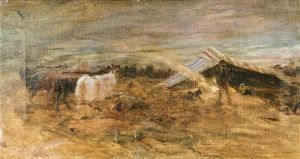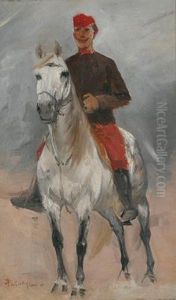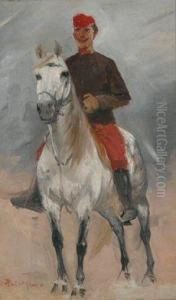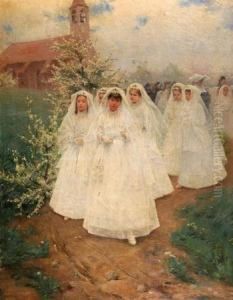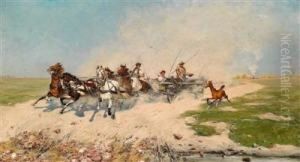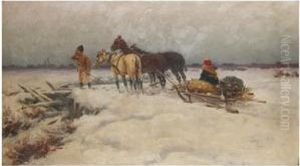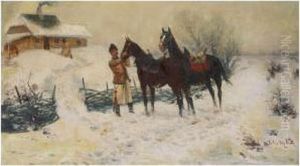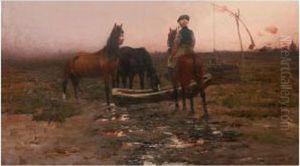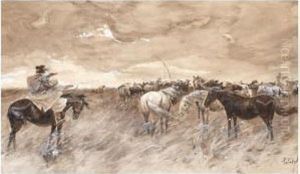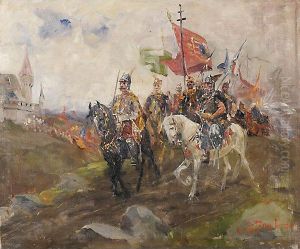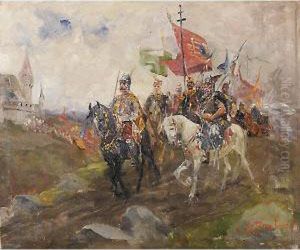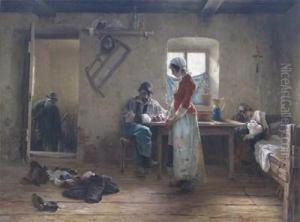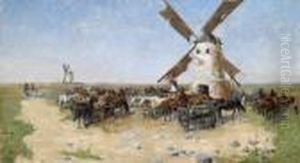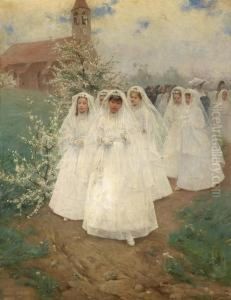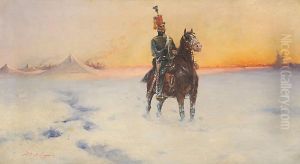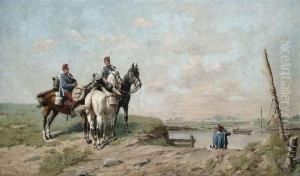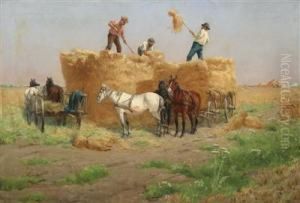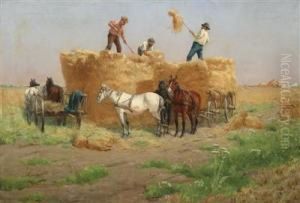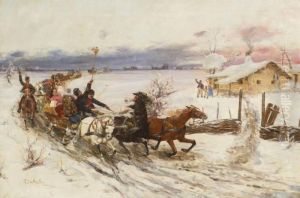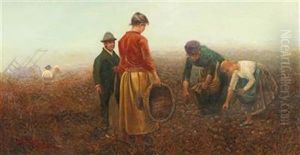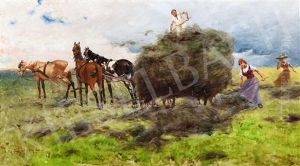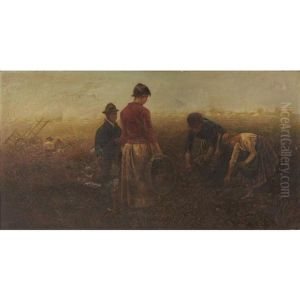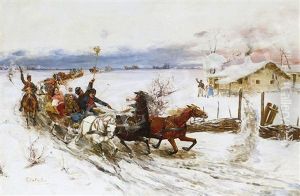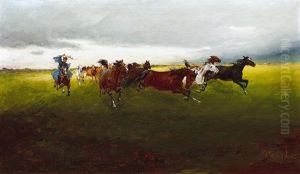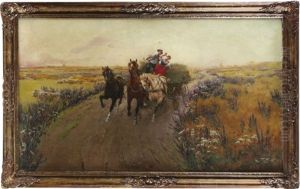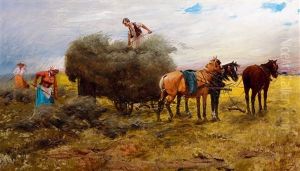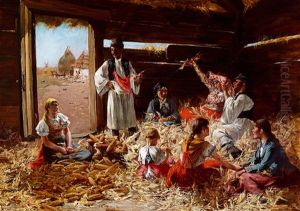Laszlo Pataky Paintings
Laszlo Pataky was a Hungarian painter, born on September 11, 1857, in Eger, which was part of the Austro-Hungarian Empire at the time of his birth. He is best known for his portraits and genre scenes, which often reflect the social and cultural milieu of his era. Pataky's work is characterized by a realistic style, with a keen attention to detail and a strong emphasis on the interplay of light and shadow, which adds a dramatic quality to his compositions.
Pataky began his artistic training at the Hungarian Royal Drawing School, where he studied under the guidance of Bertalan Székely and Károly Lotz, two prominent Hungarian painters of the time. Afterward, he continued his studies at the Academy of Fine Arts in Munich, which was a popular destination for Hungarian artists in the 19th century. In Munich, Pataky was exposed to the works of the German realists and the academic painting traditions, which greatly influenced his own artistic development.
During his career, Laszlo Pataky achieved considerable success and recognition. He exhibited his works in various important art shows, including exhibitions at the Hungarian National Salon and the Műcsarnok (Art Hall) in Budapest. His portraits often featured members of the Hungarian aristocracy and the burgeoning middle class, as well as scenes from everyday life, showcasing his ability to capture the personalities and moods of his subjects.
Pataky's genre paintings are particularly notable for their depiction of Hungarian rural life, including peasants and country festivals, which he rendered with a sense of romanticism and nostalgia. These works, while adhering to the realism of the period, also reveal Pataky's sensitivity toward the traditions and customs of Hungarian peasantry, a subject that was popular among many Eastern European artists of the late 19th century.
Unfortunately, Laszlo Pataky's life and career were cut short when he passed away on January 16, 1912. Despite his relatively short career, Pataky left behind a body of work that offers valuable insights into the society and culture of late 19th-century Hungary. His paintings continue to be appreciated for their historical value and artistic merit, and his works can be found in various museums and private collections in Hungary and abroad.
